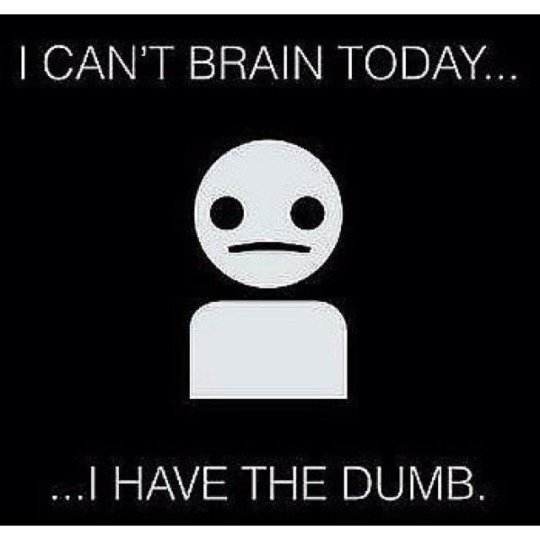Don't wanna be here? Send us removal request.
Text
Good read.
Week 11
Global social media: case study China
Wow, what a task the China Government sets itself.
Thinking back on the reading and working in IT I cannot fathom how a human-powered workforce could really be responsible for deleting posts by users. I am not sure if I am bothered by the amount of time it must take for this workforce to do their job, the sheer amount of data that they must trawl through or the Government ensuring that people’s opinions and thoughts aren’t freely expressed. Maybe it is my Australian culture that rings the alarm bells - where is the freedom of speech.
After writing the above, I am suddenly brought back to reality. This is China, not Australia. Now I am going, to be honest here I work in IT, in a school, where we block facebook. I have a range of tech-savvy students as well as not-so tech savvy student, I can block IPs and DNS to the cows come home, the reality is - if they want to access a site, they will find a way. So, from my experiences, I think that there is a range of extremely skilled individuals residing in China and I am sure that they have the skills to hack the system. Another example is NetFlix, I know individuals accessing the US site for years when NetFlix used geo-blocking, they found another way. That being said, China is continually evolving their technology to address these issues - a bit like a game of cat and mouse.
Getting back on topic, though.. why do China feel the need to censor their social media sites? Better yet, block sites such as Facebook - one of the world’s leading social media site. In some ways, they are restricting the spread of digital communities to people living only in China?
That being said, the interviews provided in the learning materials were quite interesting. For example, the vast e-commerce and consumerism in Asia when compared to common everyday internet giants well known in the western world. Maybe these defined digital communities that hold strong similarities has a ripple effect. Are they like family and friends, role models and sharing behaviours and culture such as fashion. Maybe our western world diversity is causing us to branch out and be more unique, while the eastern world is coming together… this week made me really examine and think about our social media differences.
16 notes
·
View notes
Text
Global social media: Case Study China
youtube
Video Source: https://www.youtube.com/watch?v=Po9qrFyZOM8
Oh wow, this is the final week and my final post for this blog on Digital Communities. It has been an interesting journey uncovering all the nooks and crannies of social media and how it has evolved to influence our everyday lives. From digital activism to selfie culture, social media is not just a trend anymore. This week we look into how social media is influencing the Chinese population and the Chinese government’s “Great Firewall of China”.
A close friend of mine went to work in China a while ago and he always came back with stories of great boom and economic progress happening in China. He told me there was no Google or Facebook in China, the government did not allow them but they had something better called Baidu and WeChat. I downloaded WeChat to connect with him while he was overseas. WeChat initially started as a copy of Facebook and Whats app but has quickly grown to become much more. We think it is companies like Facebook and Twitter that lead the way in innovation in social media but it is quite the opposite. Facebook features that are being introduced today have been available in apps like WeChat for a while now. Same can be said for ecommerce and online payment technologies. The innovative changes China is bringing in these fields will lead the future of this technology.
So how did this come about from a communist country that has such huge internet censorship and government intervention on peoples everyday lives. Well, Google wasn’t allowed into China because the government couldn’t control the data, so instead they created their own search engine with a local data center. Similarly, Facebook wasn’t allowed for the same reasons, but they went on to build their own social media platforms like Seina Weibo, Tencent and WeChat, to name a few. Though “the Great firewall of China” is one of the most formidable firewalls ever built, they still have been able to build their own internet craze within the firewalls. With an estimated number of 650 million active user of social networking sites in China, they have their own thing going.

Image Source: https://makeawebsitehub.com/chinese-social-media-statistics/
Reference list;
Deason, R 2016, 12 Amazing WeChat Features You Might Not Know About, That’s, viewed on 30 January 2017, < http://www.thatsmags.com/shanghai/post/16577/12-amazing-wechat-features-you-probably-never-knew-about>.
Spencer, J 2015,
2015 CHINESE SOCIAL MEDIA STATISTICS AND TRENDS INFOGRAPHIC
Make a Website, viewed on 30 January 2017, < https://makeawebsitehub.com/chinese-social-media-statistics/>.
2 notes
·
View notes
Text
Week 10: Social Gaming
Looking at this weeks topic, it takes me back to my childhood when I used to play car racing on Atari with cousins. A friend of mine owned a Nintendo which had Super Mario. We used to sit together and play that game endlessly. Later, in the mid-nineties, when I was in university the first time round, me and my flatmate chipped in to buy Play station one together. Straight after work at Maccas, all our friends would drop by at our place to have a go on the play station. We used to be up all night playing games Tony hawk, Tekken 3 and Gran Turismo. I guess we were all into arcade style games than strategic ones. They are fond memories and I am still in touch with the friends I shared those times with.
Now we are much older and hardly have the time to be sitting in front of the screen for endless hours. My son now plays Minecraft with his friends on the same network and I can see the same joy and excitement in their faces we once felt. He also plays Minecraft with his cousins who are in America on weekends. With the internet, today, all of this is possible and it has really helped with the cousins bonding and sharing a common interest. Their cousin in Mansfield (country Victoria) is also able to join the game and share the fun.

Image Source: https://mmos.com/editorials/mobile-mmorpgs
Mostly we only hear negative stories of aggression, depression and erosion of real-life friendships in the media but studies have shown that playing social games have resulted in decrease of anti-social behaviour (Trepte et al. 2012). Online games like Massively multiplayer online role-playing games (MMORPG) allow players to play in a team and interact with each other in the virtual world. This creates social proximity among players so they share interests and form bonds (Hughes et al. 2017).
Though I have never played any social games like Farmville or Candy crush, I can understand its appeal and how game developers have been able to leverage on the social media platforms popularity to make the game ever so engaging to its players. Although I am not a gamer any more I do understand how social gaming can make one feel included and part of a group of like minded people.
youtube
Image source: https://www.youtube.com/watch?v=6PBc5hi65AQ
Reference list;
Hughes, C Griffin, B & Worthington, E 2017, ‘A measure of social behavior in team-based, multiplayer online games: The Sociality in Multiplayer Online Games (SMOG) scale’, Computers in Human Behavior, vol.69, pp.386-395.
Trepte, S Reinecke, L Juechems, K 2012, The social side of gaming: How playing online computer games creates online and offline social support, Computers In Human Behavior, 2012 May, Vol.28 no. 3, pp.832-839
1 note
·
View note
Text
Great article Brett.
Visual communities and social imaging
Moving on from last week’s topic of crowd sourcing and how it is a tool for collecting resources in the form of knowledge or cash funding through the use of social medias in times of crisis, this week’s topic moves onto visual communities and social imaging. Where in last week’s topic we discussed how social media could be used in times of crisis, this week we look more on the less serious side of the use of social media platforms and how imagery is becoming more and more popular with the rise of visual communities such as Snap Chat or Instagram.
To discuss the rise in popularity of visual communities we will discuss how photography has become less of a form of social cohesion used between family and close friends, instead now photography has taken a ubiquitous format. When saying that photography has taken a ubiquitous format it refers to the fact that with the wide spread usage of social media, when posting a photo it isn’t being presented to a small audience of friends and family, it is being presented to potentially thousands of people (Hand 2014, p.104). When talking about the potential of reach in visual imagery being shared online, in 2016 the most liked upload posted on Instagram by Selena Gomez received 5.9 million likes on a single photo (Ahmed, 2016). This 5.9 million likes was on Instagram alone, with there being a wide variety of visual publics available to the public. Visual publics are a form of social media which is highly imagery based, with far less text then other social media sites such as Facebook. Instead visual publics share photos to the public and link it to people or categories through the application of tagging, this can be done through tagging a single word or a name of a person which creates the ease of both finding an image and being found themselves (Hunt, 2015).
The rise of the selfie culture is what has given birth to the popularity of visual communities. Selfie culture refers to a form of imagery which is taken by the user with a hand held camera at roughly arm’s length, this hand held camera normally is a smart phone which creates the ease of access to upload online. With the advancements of technology this has resulted in high quality images being accessible by someone’s personal phone, this goes hand in hand with why social media is so popular due to the extreme ease of access for the user. A selfie can be taken and uploaded to a given form of social media all within one minute, this begins to give insight to why visual communities are so popular.
When discussing the advancement in technologies role in social media’s popularity, this links us to our next week’s topic of social gaming and why it’s so popular and how growing technology goes hand in hand with popularity in social gaming. I hope you enjoyed reading and I’ll see you again next week.
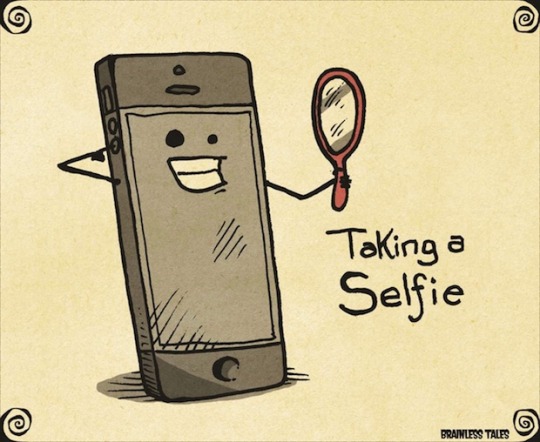
(Indian Link, 2014)
References:
Ahmed, T 2016, The 10 Most Liked Instagram Pictures of 2016 revealed, Newsweek, Viewed 28 January 2017, <http://europe.newsweek.com/10-most-liked-instagram-pictures-2016-revealed-and-theyre-all-basically-selena-527475?rm=eu>
Hand, M 2014, Ubiquitous Photography, Vol. 7 PP.104, London UK, Viewed 28 January 2017, <http://alcramer.net/library/file/pp%20101-104%20(Cramerotti%20BR).pdf>
Hunt, C 2015, Understanding and Using # Tags and @ Tags, Social Media Today, Viewed 28 January 2017, <http://www.socialmediatoday.com/social-networks/courtney-hunt/2015-07-06/understanding-and-using-tags-and-tags>
Indian Link 2014, selfie cartoon – Brainless Tales, Viewed 28 January 2017, <http://www.indianlink.com.au/could-the-selfie-narcissists-please-stand-up/selfie-cartoon-brainless-tales/>
4 notes
·
View notes
Text
Week 9: Visual communities and social imaging

Image Source: http://www.telegraph.co.uk/culture/film/oscars/10672112/Oscars-2014-the-best-celebrity-selfies-on-Instagram.html
From cave paintings to selfies, humans have always used images as a communication tool. Being able to capture the moment and share it with the world, picture speaks a thousand words. Did you know the world #selfie originated from Australia? The word was first used by an Australian man who shared an image of his busted lip in a forum post back in 2002 (Radulova 2015). Today, armed with a social media account and a smartphone, everyone is part of the selfie culture. People love taking pictures and documenting their lives with photographic evidence to show the world what an interesting life they have.
Selfies are more popular among the younger crowd aged between 18-25. Social media sites like facebook, Instagram and snapchat are inundated with them. Over 300 million Instagram photos have been tagged with the selfie label (Seiter 2015). It is all about self-curation and building your online reputation. The need to tell the world that I am so fabulous and look at my life, it is great.
So, has selfie culture gone out of control? Some of us believe it has gone way too far and just is a meaningless fad that feeds into the narcissistic behaviour and devalues the purpose of taking pictures, to capture that special moment. Selfie culture seems to think every moment is special and highlights the growing narcissism in our society. While the other half seem to think that every moment is special and worth capturing. A beautiful mode of self-expression that allows you to share happiness, sadness and every emotion in between (Menza 2015).
However there are dangers to the selfie culture and we should be worried. Especially for teens and young adults which can result in poor self esteem from an obsession of taking selfies and body imagery. Posting selfies can also have negative effect on their online reputation and can attract negative comments and online predators. Teens need to be aware of the dangers and be careful sharing pictures of themselves online.
Reference list;
Menza, K 2015, Debate: Is Selfie Culture Out of Control?, Choices, viewed on 24 January 2017, < http://choices.scholastic.com/story/debate-selfie-culture-out-control>.
Seiter, C 2015, The Psychology of Selfies: Why We Love Taking and Viewing Photos of Faces, Buffer Social, viewed on 24 Jan 2017, < https://blog.bufferapp.com/psychology-of-selfies>.
Radulova, L 2015, Australia revealed to have invented the word 'selfie' as more than 2000 Aussie phrases and words are added to Oxford Dictionaries, Daily Mail, viewed on 24 Jan 2017, < http://www.dailymail.co.uk/news/article-3061118/Australia-revealed-invented-word-selfie-2000-Aussie-phrases-words-added-Oxford-Dictionaries.html >.
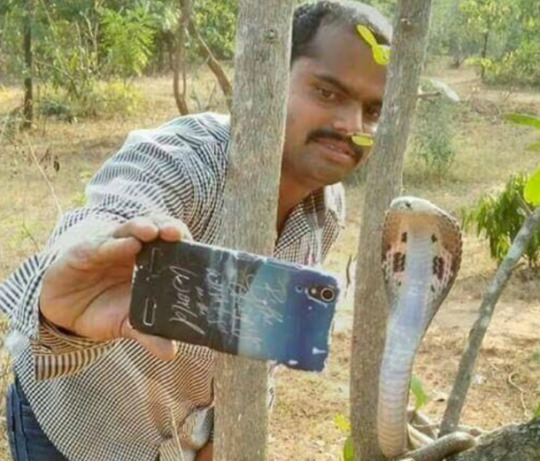
Image Source: http://rebrn.com/re/selfie-with-a-snake-1962222/
youtube
Video Source: https://www.youtube.com/watch?v=-yLdCwzL42A
1 note
·
View note
Text
Week 8: Crowdsourcing in times of crisis
In October 2012 when hurricane sandy landed on the east coast of the United States, I was in New Jersey visiting my brother and his family. I still clearly remember the night of hurricane sandy, the lights went out as the storm intensified and we were left in the darkness with howling winds that was getting louder n louder as we reached the eye of the storm. The only thing working were our mobile phones, Facebook and twitter became our source of information and news from there forth.
The local area services used text messaging to send out updates in the area, especially in the days and weeks that followed where there was no electricity in the freezing cold and snow (Starbird 2012). Emergency services were in tremendous pressure as they needed to prioritise their work and often slow to reach badly affected areas. During this crisis period people submitted videos, photos and updates to let their loved ones know of what was going on and if they were safe.
Again on April 2015, I was in Nepal when the earthquake disaster happened. This was even worse as it is a third world country with bare minimum emergency services and poor media reporting. So, people had to rely on social media apps like Facebook to get updates on the areas that were heavily affected and what was happening with the relief efforts. Facebook provided a “I AM SAFE” button for users to let their family and friends know that they were safe.
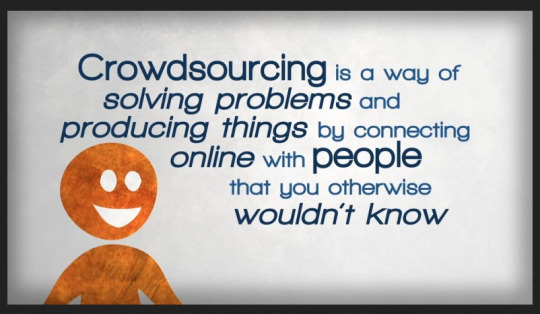
Image source: https://iic2015.wordpress.com/2015/03/12/crowdsourcing-whats-the-catch/
In the above two events, social media and crowd sourcing have played a major role as people were able to upload information. This helped emergency services direct their efforts in areas where it was most needed. Crowd mapping software Ushahidi gained popularity in 2008 which geo tags user generated content in a simple way (Casanovas 2012). This software was also used during the Haiti earthquake crisis and is a great example of how crowd sourcing information can be used in times of crisis.
However, it has its drawbacks as the accuracy and reliability of the information cannot be relied upon. The Boston Marathon bombings case is a prime example where the crowd sourced information led to a person being falsely accused on social media that led to the man’s demise (Yousef 2015).
Reference list;
Casanovas, P 2012, Crowdsourced crisis mapping: how it works and why it matters, The Conversation, viewed on 20 Jan 2017, < http://theconversation.com/crowdsourced-crisis-mapping-how-it-works-and-why-it-matters-7014>.
Tavaana 2015, “IT’S TIME TO COME TOGETHER": CROWDSOURCING A CITIZEN RESPONSE TO HURRICANE SANDY, Tavaana, viewed on 20 January 2017, < https://tavaana.org/en/content/%E2%80%9Cit%E2%80%99s-time-come-together-crowdsourcing-citizen-response-hurricane-sandy-0>.
Yousef, N 2015, Their Dead Son Was Blamed for Boston Bombing, The Daily Beast, viewed on 20 January 2017, < http://www.thedailybeast.com/articles/2015/04/19/their-dead-son-was-blamed-for-boston-bombing.html>.
1 note
·
View note
Text
Activism and Protest
In week six we delved into social media’s role in contributing to activism and protest. It can be an extremely powerful tool that can be used in many ways to encourage community engagement and facilitating action as they have the potential to reach on a global scale. “The profound impact of networked technologies on societies economically, socially and politically has led some to claim that we have entered a new era” (Cammaerts 2015). Today we will be focusing on the topic of slacktivism and clictivism. Slacktivism is a willingness to execute a somewhat free “display of support for a social cause, with an accompanying lack of willingness to devote significant effort to enact meaningful change” (Davis 2011). The increase in the usage of social media of charity organisations and activism groups is one aspect that has made it progressively easy for society to participate in “small token acts of support for causes” (Kristofferson et al. 2013). With that being said, there are criticisms of this growth of social media usage in that it has contributed to the growing rate and new origination of slacktivists that only participate in ‘empty’ displays of support for any cause or issue as they are unlikely to participate in any ‘real’ contributions. Personally, I have never participated in any slacktivist activities myself, but I am greatly exposed to these acts via social media and by those in my social circle. I have found that most of these acts are usually listed in the ‘most trending’ section of Facebook and Twitter. An example of slacktivism on social media would be the filters that can be used on profile pictures on Facebook. These filters were created in order for Facebook users to show support for certain events or movements. For example, supporting the Paris attacks by using the French flag filter and supporting the Orlando shooting or celebrating gay pride by using the rainbow filter. There are many conflicting opinions on this topic, one of the negative opinions which you can read here. Another example of slacktivism was the #IceBucketChalllenge that went viral in 2014, where countless videos of people pouring buckets of ice on themselves were uploaded onto Twitter, Facebook and Instagram in order to raise awareness for ALS (Amyotrophic Lateral Sclerosis). The rules of this challenge was if you were nominated to make a video, you had to do so within 24 hours otherwise you had to donate $100 to the ALS Association. Many people have agreed that this campaign failed, such as Kosinski (2014) who has said that those who were up for doing the challenge and spent the time and money on going out to buy that bag of ice, could have alternatively contributed that to the cause instead. You can read the full blog here.
youtube
References:
Cammaerts, B 2015, ‘Social Media and Activism’, London School of Economics and Political Science, Oxford, UK.
Davis, J 2011, ‘Cause Marketing: Moving Beyond Corporate Slacktivism’, viewed 26 January 2017, <http://evidencebasedmarketing.net/ cause-marketing-moving-beyond-corporate-slacktivism/>.
Kosinski, B 2014, ‘#IceBucketChallenge: Why You’re Not Really Helping’, The Huffington Post, viewed 26 January 2017, <http://www.huffingtonpost.com/ben-kosinski/icebucketchallenge-why-yo_b_5656649.html>.
Kristofferson, K, White, K & Peloza, J 2013, ‘The Nature of Slacktivism: How the Social Observability of an Initial Act of Token Support Affects Subsequent Prosocial Action’, Journal of Consumer Research, vol. 40, no. 1, pp. 1149.
6 notes
·
View notes
Text
Week 7: Digital citizenship 3: Trolling and social media conflict
As a parent of a 5 and a 7-year-old that use way too much electronics, I do worry about their their virtual interactions online. Though its only kids videos and Minecraft games for now, I have to rein it in and constantly monitor what they are watching online. I have setup a web proxy server, changed router settings, fire walled the computer and fine-tuned browser settings to control their viewings for now but one day they will venture deeper into the virtual world and start online social interactions on the web. So this week’s topic of trolling and social media conflict has definitely been peaking my interest.
All of us would have experienced some form of bullying at some stage of our lives, maybe in the school yard when young, at the work place or some crazy rant by a bigot in a public area. Now that we are also connected online all the time, bullying can be seen and experienced by people on the internet and in social media. The comments section on news sites, youtube, facebook feeds, twitter and blogs sites are filled with examples of haters and negative comments.

Image sourced from: https://twitter.com/flamethrower_30
Trolls are internet users that deliberately upset others by making foul and inflammatory comments to start an argument and rise others in a website or social media just to have fun and entertain themselves (Moreau 2016). These are idiots, also known as trolls, putting inappropriate content online just for the sake of it that give internet a bad name. It gets worse when they form groups to repeatedly try and hurt or embarrass others, an example of cyber bullying. Social media allows these kinds of posts to be liked, shared and re-posted to make it spread fast over the internet. Though this kind of behavior is not old and can be seen among teenagers in school yards everyday, now the same can be seen online where the bullying is aggressive, repetitive and there is an imbalance in power as defined by Boyd (Boyd 2014, p.131)
While trolling is done with an intent to make fun of others and as a joke, social conflict is far more serious. This is when bullying takes a more sinister turn and the bully starts using private messaging with threats and hate messages. There have been many cases of suicide triggered by relentless cyber bullying, especially among teenagers (Ford 2015).
So how do we educate our kids on these issues and who do we turn to for help if we ever experience one. Well of course, the first thing is to just turn off the device and forget about it. Don’t engage as they are only trying to get a rise out of you. You can also tell your parents, teacher or an adult supervisor about your experiences online to look into the issue. Most importantly, don’t be a troll yourself. Don’t say something that you wouldn’t say to others face to face. Just because its virtual does not mean you can act like an idiot. Learn to respect others online like the way you would do offline.
Reference list:
Boyd, D 2014, Bullying: Is the Media Amplifying Meanness and Cruelty?, It’s Complicated: The Social Lives of Networked Teens, Yale University Press, New Haven, USA.
Ford, M 2015, Cyber bullying: Father crusades to stop bullies after daughter's suicide following Facebook tirade, ABC News, viewed on 15 January 2017, < http://www.abc.net.au/news/2015-08-17/father-crusades-to-stop-cyber-bullies-after-daughters-suicide/6703668>.
Moreau, E 2016, Internet Trolling: How Do You Spot a Real Troll?, Lifewire, viewed on 15 January 2017, < https://www.lifewire.com/what-is-internet-trolling-3485891>.
3 notes
·
View notes
Video
youtube
Image Source: https://www.youtube.com/watch?v=S56lpon1JX4
Internet Troll Gets Owned!! Love it!!
0 notes
Text
Week 6: Digital citizenship 2: Activism and protest
Week 6 Digital citizenship discussed how technology and social media has enabled grass root movements to apply pressure on our leaders to bring about change and reshape society. Digital activism has definitely transformed how protests are organised through use of smart phones and social media to mobilise huge number of supporters. Some examples of digital activism and protest movements successfully facilitated by social media platforms in the last decade include the Arab Spring uprisings, Occupy Wall Street and the Tunisian Revolution, where a young vegetable vendor set himself on fire and young Tunisians organised protest against the oppressive regime on Facebook and Twitter.
The power of the internet and social media cannot be denied. The “civic culture” transcends geographical restrictions and provides low barriers of entry, allowing anyone with the technology a voice and the ability to participate in debates ( Karatzogianni 2016, ). These kinds of digital activism are becoming more and more everyday occurrence where people are using new technologies as an alternative way to organise society. Some examples of tools used by digital activists are proxy servers to circumvent government interventions, smartphones and smartphone apps to spread message quickly, online petition websites like change.org to communicate with people worldwide about their cause, social networks like Facebook and YouTube to gain support and spread message shunned by mainstream media and use of blogs, microblogs and hashtags with keywords to spread awareness within the platform and its users.
Hacktivism groups like Anonymous have hacked into the computers of corporations, governments and the rich and powerful to reveal confidential documents which have had serious consequences. Some recent examples include the leaking of panama papers by the website wikileaks which received mainstream media coverage. This lead to protest marches forcing the prime minister of Iceland to step down.
Though these platforms allow activists to garner quick support for the cause, clicktivism is not just about promoting social change, it is also about the digital media facilitating these activities. Clicktivists use complex metrics like “open-rate”, “click-though-rate” and “subscribers” to show power and emphasise the support for their cause (White 2010). However, too many clicks on Facebook likes, re-tweet trending hashtags and re-blog of online articles, highlight issues of passive activism. Pressing a like button on Facebook or re-tweeting a trending hashtag takes little effort than getting out the streets and marching in a protest rally, thus this new era of activism has also been known as “clicktivism” or “slacktivism”.
Reference list:
White, M 2010, Clicktivism is ruining leftist activism, The Guardian, viewed on 09 January 2017, <https://www.theguardian.com/commentisfree/2010/aug/12/clicktivism-ruining-leftist-activism>.
Karatzogianni, A 2016, Beyond hashtags: how a new wave of digital activists is changing society, The Conversation, viewed on 10 Jan 2017, <http://theconversation.com/beyond-hashtags-how-a-new-wave-of-digital-activists-is-changing-society-57502>.
3 notes
·
View notes
Video
youtube
Video Source: https://www.youtube.com/watch?v=VpziZvMU_-M
Hactivism - What is it?
1 note
·
View note
Text
Great post @ controlledbytheinterwebs
Social gaming, is it actually social?
I personally have no experience with gaming of any sort as I have absolutely no skill or ability when it comes to games (both physical and online).
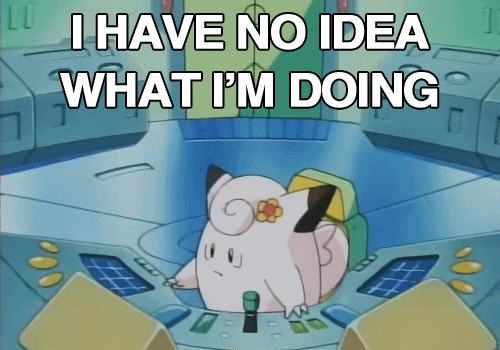
However, I know many people who have become somewhat addicted to the world of online gaming and the friendships they have established there. The skeptic in me tries to argue that this is an easy way for the nerds of the world to claim interaction without really interacting. But does online gaming really count as social interaction?
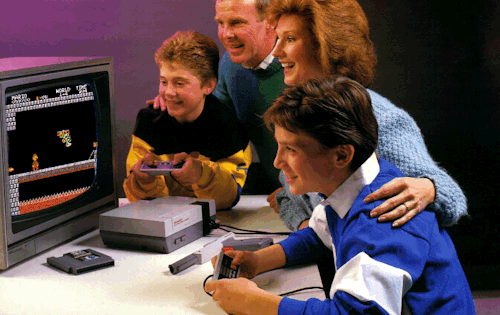
Well, yeah, it does.
“According to a survey by the Pew Internet and American Life Project (Lenhart et al., 2008), 97% of US teens (aged 12–17) play video games on a computer, with a handheld device, or dedicated games console.” (Kowert et al 2014, p.385)
That’s quite a few people, and that’s only one country. Online gaming is a world-wide phenomena. That’s a lot of people who are supposedly ‘not interacting’ with each other.
However, as Kowert et al. continue to discuss, there may be many issues associated with a growing reliance and dependence on online gaming for social interaction. What happens if young teens begin to swap their real life friends and social connections for those online.. will this have a detrimental impact on their wellbeing and mental health?
“The results indicated that adolescents who play video games report spending less time on school related activities, with parents, and with friends in other activities, than adolescents who do not play games.” (Kowert et al 2014, p.386)
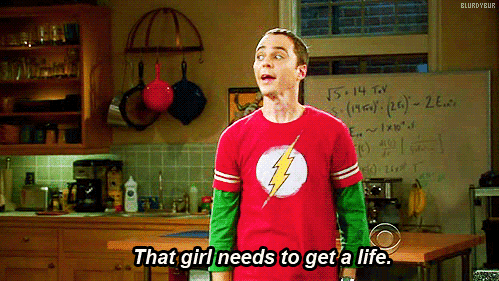
Surely this can’t be a good thing?
Or can it? According to Kim et al. “the benefits and value of playing MMORPGs are varied and interesting, including social interactions [and] group interactions” (Kim et al 2013, p.11).
According to Zhang et al “in terms of social network structures, dynamical social gaming networks are closer to real scenarios and beneficial to cooperative behaviors” (2015, p.4)
Maybe we just need to update our understanding of social interaction to include online forms as well as physical forms?
References
Kim, K, Yoo, B & Kauffman, R.J 2013, ‘Valuation of Participation in Social Gaming’, International Journal of Electronic Commerce, vol. 18, no. 2, pp. 11-49
Kowert, R, Domahidj, E, Festl, R & Quandt, T 2014, ‘Social gaming, lonely life? The impact of digital game play on adolescents’ social circles’, Computers in Human Behavior, vol. 36, pp. 385-390
Zhang, Y, Chen, G, Guan, J, Zhang, Z & Zhou, S 2015, ‘Unfavorable Individuals in Social Gaming Networks’, Scientific Reports, vol. 5, pp. 1-11
22 notes
·
View notes
Video
youtube
Video Source: https://www.youtube.com/watch?v=1oPfVmkFgko
0 notes
Text
Week 10 Social Gaming!
Gaming - ok I will admit it, I have an active World of Warcraft account - don’t judge! But my blog post this week will explore not only the content but my experiences and thoughts about the game.
To me, gaming is an outlet. To forget the stresses of the day, week, month or year. I just am a little Mage Dwarf roaming around completing quests and learning skills. As much as I would like to think that I am disconnected from the big wide world, I could not be more wrong. I am more connected when playing the game that if I was reading a book.
So I am an avid participant in ‘multi-user dungeons’ (MUDs) and multiple online role-playing games.. so what really does this mean. I mean that within the game, there is a range of mini-networks named guilds. I join a guild and this becomes your network. The congratulate you when reaching milestones, provide advice to achieve goals and help out when needed. Sound familiar? I guess it has it own Facebook. The inbuilt chat on the game is a virtual community. Which in some ways leads to lasting friendships outside of the game.
Just like any other community, there are rules and expectations. Some guilds are more relaxed than others, welcoming new people (referred to as ‘noobs’) they will assist and transfer in-game currency to help them progress quickly. Other guilds are focused on producing goods such as wool, armor, pets and will be continually increasing their stocks, fierce and long-time players may be a part of an elite guild designed for ‘raiding’ where special pieces of equipment and other rewards are received when a team of players working together defeats a boss.
I do admit, that I feel a sense of security with my online community, however, I have no idea who they are, what they do or like… maybe that is the magic of online gaming, I treat is anonymity as a positive.
15 notes
·
View notes
Link
3 notes
·
View notes
Text
Politics & Civic Cultures
Week 5 focuses on politics and civic cultures and how social media is changing the landscape. 2008 US elections has been a prime example and case study which have been analysed and re-read many times as it was also known as the “Facebook election”. 24 year old, Chris Hughes left Facebook and joined the Obama campaign as chief digital strategist. Through use of blogs, social media, SMS and mass user database generated during the campaign, Obama could communicate with voters directly and get his message across. The social media platform allowed a two-way communication which meant it was not just about the leader but about the voice of individual voters and their individual concerns. #Yes We Can and #Change were the hashtags used during the campaign to garner support and gain momentum for the campaign which they eventually won.

Today, social media is part of every political campaign. We saw this once again in the recent US elections and Donald Trump’s prolific use of twitter to keep in touch with voters and get his opinions out there. In a recent interview, Donald Trump expressed that it was his use of twitter that kept him in the forefront of voters’ mind and eventually led him to victory. "Frankly it's a modern day form of communication," Trump said about Twitter (Little 2016). Regardless of some of the comments he made on twitter or how he used it to get ahead and win the race, it clearly shows how people in society connect today and how ideas are spread.
Lately it seems social media is the platform of choice for us to receive up to the minute details on any election campaign (Young 2010). As seen in Australian politics, it sometimes feels more of a promotional platform than a platform to participate and engage with every day people (Jericho 2012). However, it can be said that it is a large public platform where people can express their views and opinions and weigh in on the topic. It empowers the voters and allows them to connect with the leader directly, hear their views and express their concerns through multitude of social media channels.
References
Jericho, G 2012, ‘How many votes are there on Twitter?’, in The Rise of the Fifth Estate, Scribe, Victoria, Australia.
Young, S 2010, 'News, political reporting and the internet’, in How Australia Decides, Cambridge University Press, Victoria, Australia.
7 notes
·
View notes
